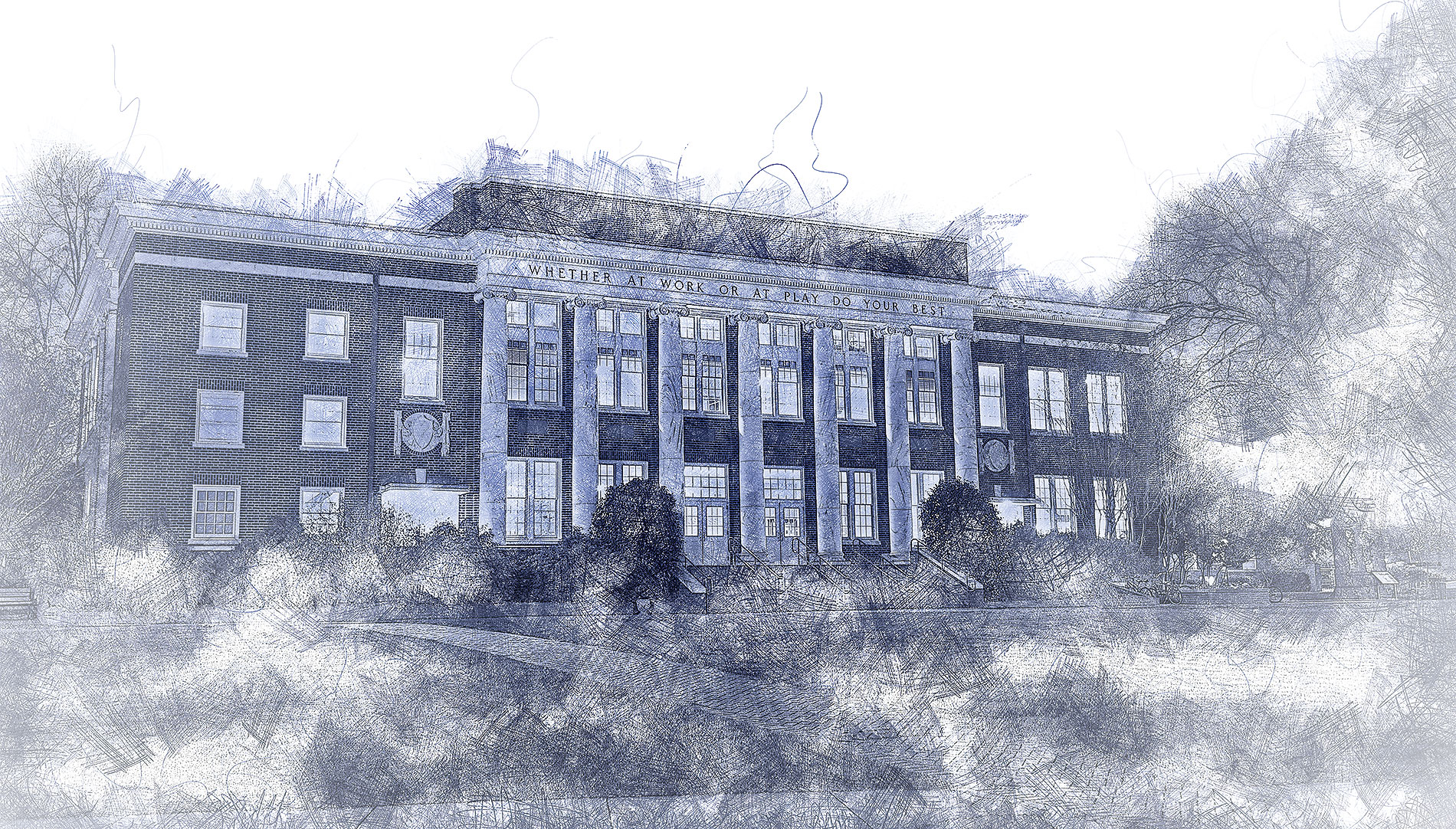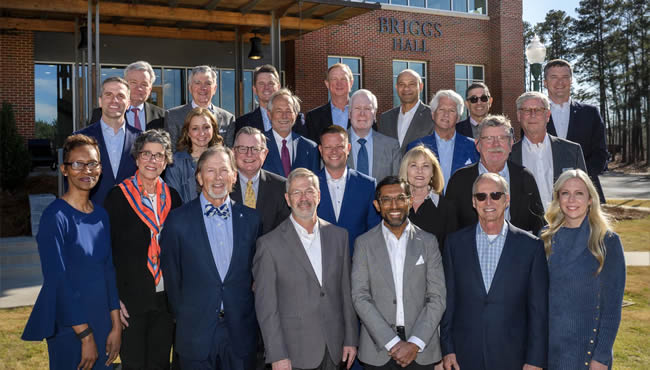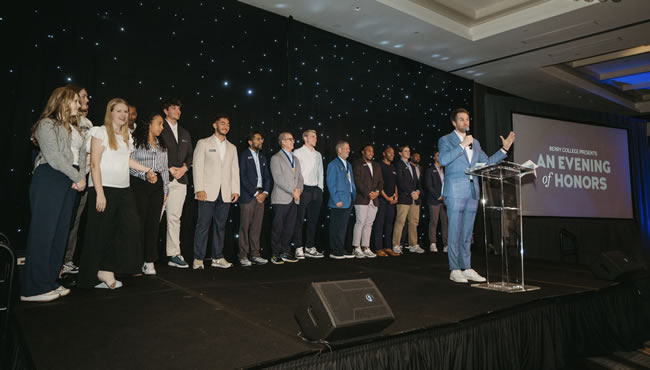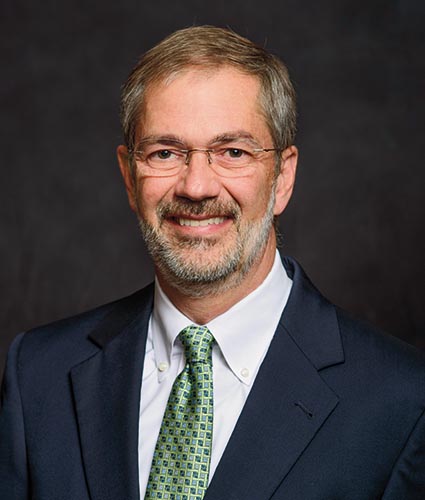
Dr. Stephen Briggs
Most organizations, whether for profit or nonprofit, have a statement of mission or purpose. Consider a few examples.
Google: to organize the world’s information and make it universally accessible and useful.
Tesla: to accelerate the world’s transition to sustainable energy.
Harvard University: to advance new ideas and promote enduring knowledge.
Mission statements point the way forward and are aspirational. Done well, they successfully differentiate an organization from its competitors. However, if grandiose or inauthentic, they can be viewed cynically.
Renewing the mission
Every five years, consistent with best practices in higher education and as part of the reaccreditation cycle of self-study, the college Board of Trustees reviews and affirms Berry’s mission statement. As the board initiated this process in October 2023, it recognized the need to update the language – last amended in 2003 – to make it more aspirational and less descriptive in tone.
The intent was not to change the statement’s defining elements but to enhance the focus on Berry’s enduring purpose, preferably incorporating a brief memorable phrase highlighting the college’s distinctiveness and anchored in its rich history.
In March 2024, the Board of Trustees approved the following revision to Berry’s mission statement.
“We educate the head, heart, and hands – to inspire leaders of integrity who cultivate thriving communities.
“Combining academic exploration with meaningful work responsibilities in a residential setting, our approach emphasizes firsthand experiences and mentoring. We invest in the personal growth and professional preparation of talented students from varied backgrounds, with an enduring commitment to help those hindered by financial need. Guided by Christian principles, we value the dignity of individuals, the search for truth tempered with grace, and the well-being of our neighbors.”
Historical context
As part of the process, Wesley Romero (24C), then student manager in the Office of the President, scoured Berry’s academic catalogs for previous renderings of the mission statement. The earliest versions (1915-1926) pertained to the Berry Schools. Starting in 1927, they included and focused increasingly on the college.
From its fledgling years and into the late 1950s, Berry’s mission emphasized a commitment to young people “from the mountains and rural districts of the South ... too poor to go elsewhere.” It promised an education of the head, heart, and hands to prepare students for leadership in country communities. According to the catalogs from the 1940s:
“The Schools hold that a liberal education includes the training of the head, heart, and hand. It is not enough simply to know. Education in school must be like life out of school.”
As the South’s educational infrastructure improved, Berry adapted, broadening its reach, with its mission statement evolving accordingly. Although the expression “head, heart, and hand” disappeared, it has remained as the organizing theme since 1958. In the version adopted in 2003, Berry’s extended mission language conveyed the importance of this three-fold approach:
“Our first responsibility is to provide an education in the liberal arts and professional fields to meet the intellectual, moral, and material needs of our students; …
“An essential part of a sound education is the opportunity to explore religious faith and to relate faith with learning responsibly and intelligently …
“Worthwhile work complements knowledge and faith in building character. We dedicate ourselves to providing this opportunity.”
Berry’s renewed mission statement embraces the expression – head, heart, and hands – most often used to describe a Berry education. It also answers the question “why this approach?” in a way that connects our efforts today with Martha Berry’s founding aspirations. Her aim was to prepare young men and women to become the leaders and pillars of their rural communities, just as today we encourage students to invest in the well-being of their local organizations and home communities by meeting the needs of others well.
Heart of the matter
For more than a decade, members of our campus community have encouraged one another to live up to the college’s expectations using the adage: “Be Berry.” Students, faculty, and staff are attracted to Berry by its distinctive culture and character, and guests sense the difference as well. People allude to Berry’s values, sometimes quoting a phrase used by Martha Berry, but these principles have not been presented in any organized form.
As a complement to the renewed mission statement, the board endorsed an effort to articulate these formulative values, deeply rooted in the soil of Berry. The result of this work is below. Supporting quotations – in italics – are attributed to Martha herself (unless otherwise credited).
The Character of a Berry Education: Values and Virtues
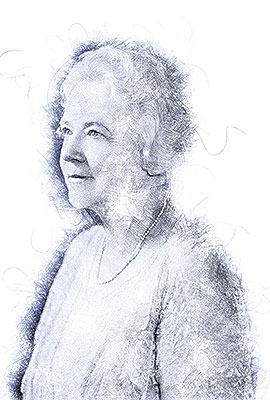
More than a century ago, our founder Martha Berry was troubled by the daunting needs and cyclical poverty of families living in rural Georgia. She believed young people were the region’s most important natural resource and that education was the gateway to opportunity. She offered an education of the head, heart, and hands in a residential context to inspire graduates known for their work ethic, integrity, resourcefulness, and willingness to serve. Inspired by her faith and life’s work, Berry adheres to these core values and virtues.
1. Love your neighbor.
Martha Berry was called to serve those in her community most in need of support. She considered them neighbors and offered education as a gate of opportunity, a way for them to move toward a better life.
“Miss Berry, realizing the great lack of her own neighborhood, began to lend her best energies to the solution of the problem of how to broaden the lives of the people living near her and to bring the advantages of education within the reach of the young people of the surrounding country.” (1920 Berry catalog, p. 5)
One of the quadrants in Berry’s seal contains a cabin, depicting the principle of simplicity that Martha Berry lived by. She was single-minded and self-sacrificing in her desire to create opportunities for her students and would not be distracted by the pursuit of other things.
“My simple desire to do something became a determined resolution to devote my entire time and resources to teaching students a way to help themselves.”
2. Lead through service.
When the college was established, Martha Berry chose for its motto a text that speaks to the heart of leadership:
“Not to be ministered unto, but to minister,” which is to say, “Not to be served, but to serve.”
We urge members of our community to serve humbly as Good Neighbors. If we care about the big problems in our nation and the world, we can address these issues faithfully in our home communities. A leader with a Good Neighbor mindset discerns and acts to meet the real needs of others beyond self-interest.
3. Assume responsibility.
People want to be judged trustworthy. Trust is earned by accepting responsibility not just for our own work but equally for the work of the team and the betterment of the community. Responsibility is the backbone of character.
“Be a lifter, not a leaner.” The original motto of the Berry Schools, given as a charge by Teddy Roosevelt in 1910.
4. Care for nature.
The places we inhabit are entrusted to us for a time before we pass them to others. Martha Berry believed that “Beauty is a part of education.” We are responsible to our children’s children for improving the beauty and health of the places and the planet we call home.
“I pray that I might leave this place better than I found it.”
5. Aim high.
From the start, Berry has celebrated the dignity of “worthwhile work done well.” The commitment to mastery of one’s craft begins with the first writing class, entry level job, and back-up position on the team. Martha Berry willed students to do their best. Seemingly mundane tasks teach work ethic; demanding duties teach tenacity; complicated projects teach resourcefulness.
“Whether at work or at play do your best.” (Inscription on Green Hall)
6. Lean into difficulty.
Martha Berry’s life’s work was framed by adversity. Looking at one of the wizened old oaks on campus she observed: “The troubles you have are what make you.” She respected hardship as a profound teacher that opens eyes, softens hearts, and emboldens resolve.
“Pursuit of the easy things makes us weak; pursuit of the difficult makes us strong.”
7. Learn firsthand.
Berry was founded on the idea of combining academic study with a practical education of the hands. Today, firsthand experiences infuse our classes, laboratories, studios, research projects, community projects, internships, and study abroad as well as the college-wide LifeWorks program. We affirm a time-tested principle: “Learn to do by doing.”
8. Embrace difference.
A rich variety of voices and ideas makes Berry a dynamic place to encounter perspectives that are unfamiliar and unsettling. This diversity combined with curiosity and respect for difference allows for richer relationships and deeper learning through candid and caring dialogue. When difference leads to disagreement, our aspiration is to engage our neighbors with patience, humility, and warm-heartedness.
9. Build community.
Inscribed above the fireplace in Roosevelt Cabin, where Martha Berry lived for a time, is the phrase “kindle friendship.” She understood the power of a caring residential community to ignite relationships that shape, heal, and invigorate hearts and minds. She established Berry’s commitment to engagement and mentoring.
10. Nurture faith.
Martha Berry placed spires on many campus buildings, even the chicken houses. Meant to catch the eye and lift the heart, they reminded students of the worth of work done well before God. As students seek purpose and a moral compass for life, it is vital that they examine their religious commitments and relate faith with learning responsibly and intelligently.
These foundational values and virtues grew out of Martha’s resolve to live out the convictions of her faith, stepping past her doubts and failings. She was principled and pragmatic, and her efforts radically improved the lives of ten thousand young people over a period of decades. These values shaped and continue to define the mission of Berry College, just as her indomitable spirit continues to inspire us to improve this place where we live, work, and serve.
